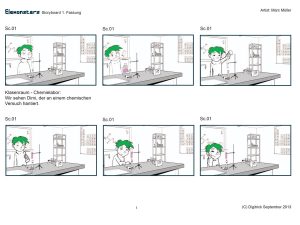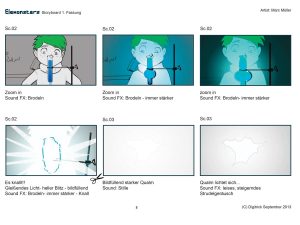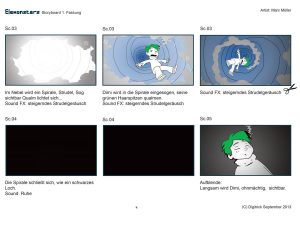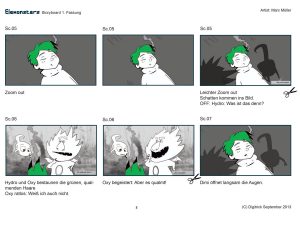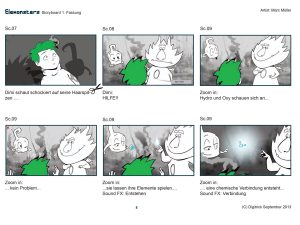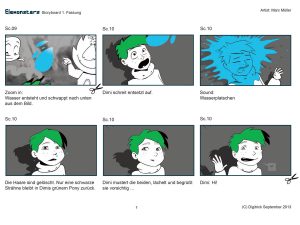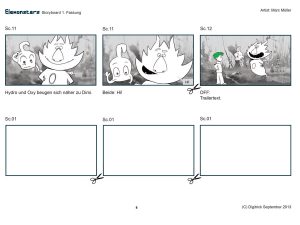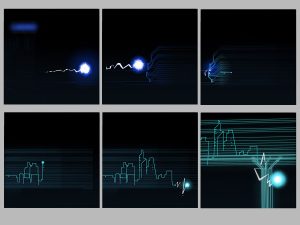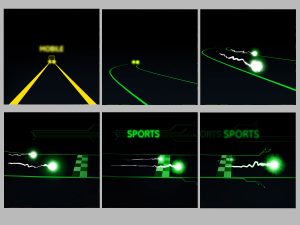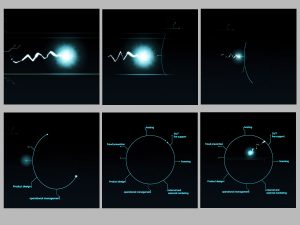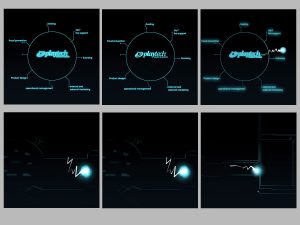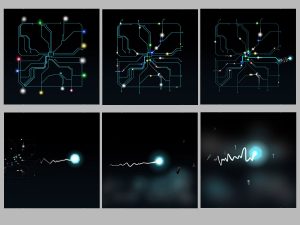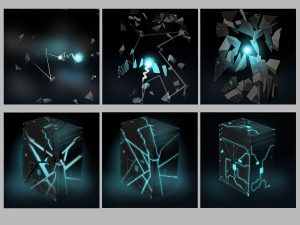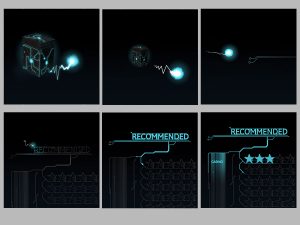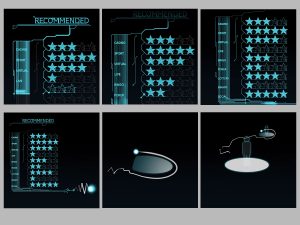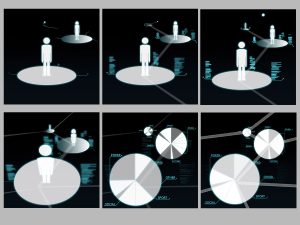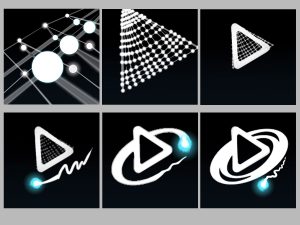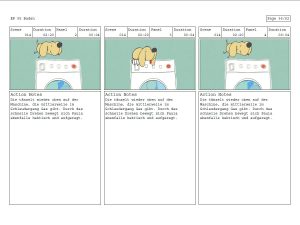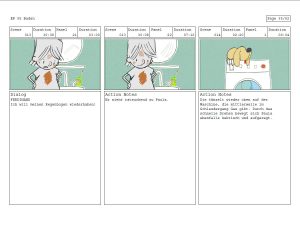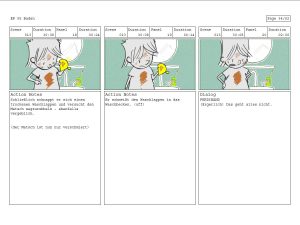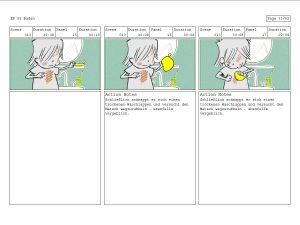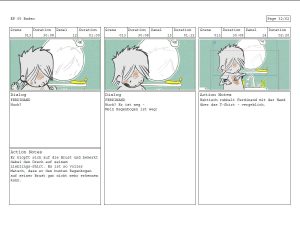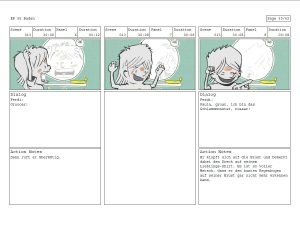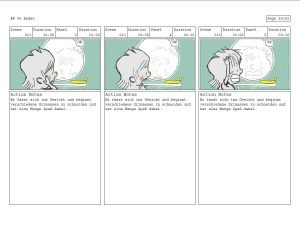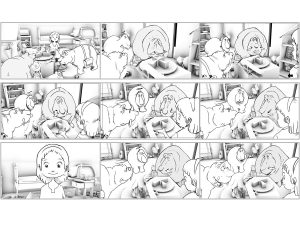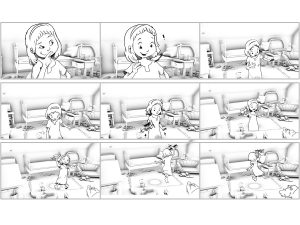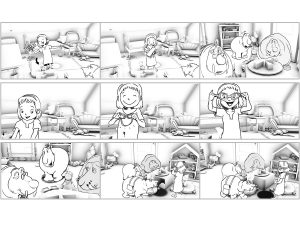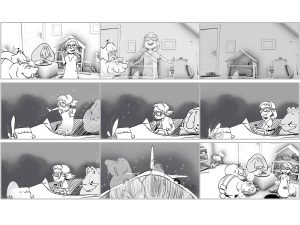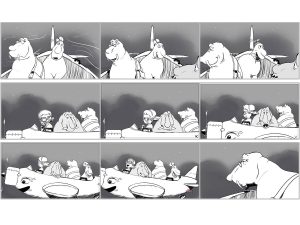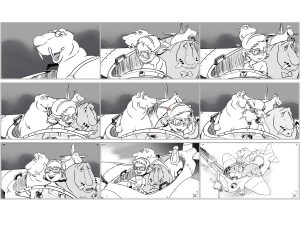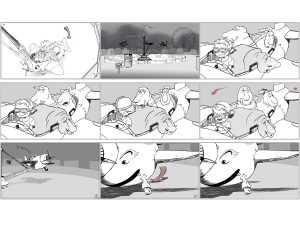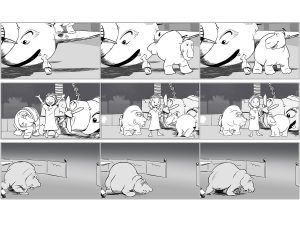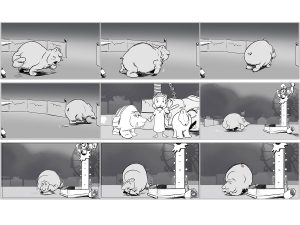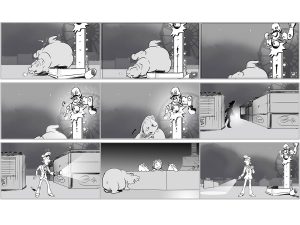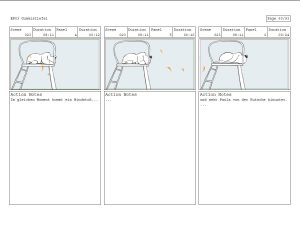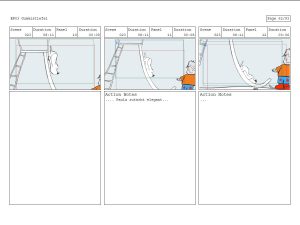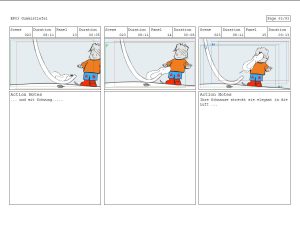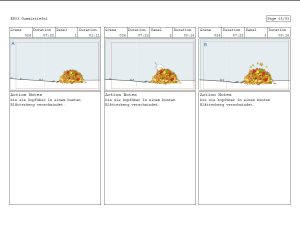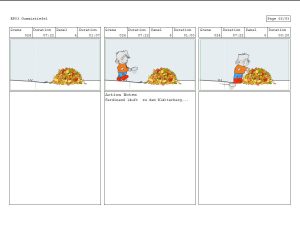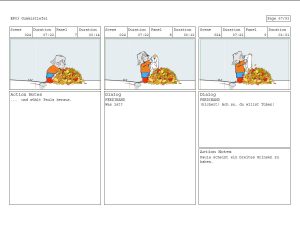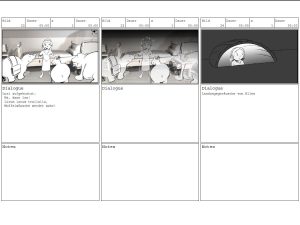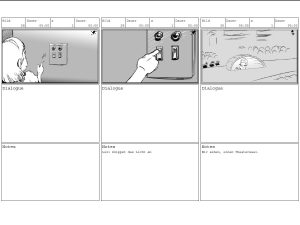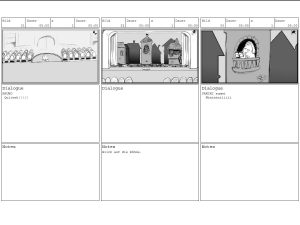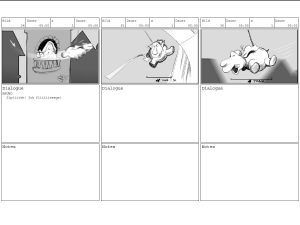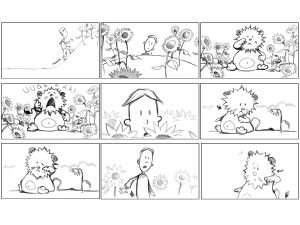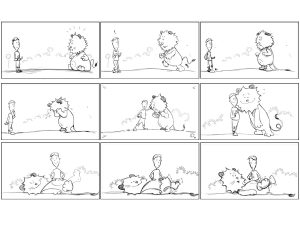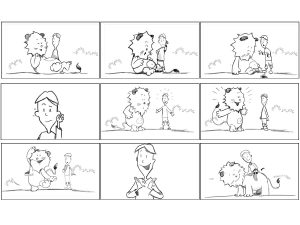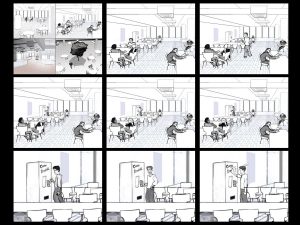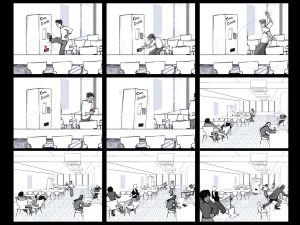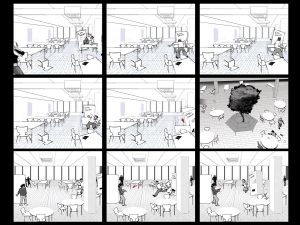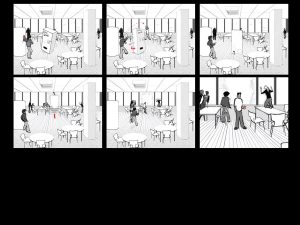Storyboarding: approach & workflow
Simply put, a storyboard is a sequence of pictures, telling a story. More precisely put, a cinematographic resolution or dénouement of a script, or the blueprint for the cinematic implementation. Therefor it takes into consideration not only the scene, camera settings, camera movements, cuts or dissolves but also the positioning and movements of actors or characters (animation).
When I receive a script, I read through the printout and start making notes and scribbles next to the paragraphs. In my mind, I create a rough road map. I lock down ideas for key scenes and transitions, later I work chronologically through the script in detail.
In the first round I keep it loose and scribbly; oftentimes good opportunities and ideas will become available only once the connected scenes are scribbled in and I can see them next to one another. Hence, the beginning shouldn’t be carved in stone just yet, in order to stay flexible and amenable to ideas. At this stage, possible weaknesses in the script and bridging errors can become visible. The sort, which doesn’t appear to every eye by merely reading the script, but displayed in a consequential flow of images, scenes grant better insights to weak points or even contradictions, as for example with timing or movements (on set) of actors or camera.
Whilst building a flow of panels, I regard the resolution of the scenes; in what camera angle or point-of-view shot a scene will work the strongest or tell the story best. Close-up or medium close-up, shot and reverse-shot (e.g. for dialogues), full shot, medium long-shot or long-shot (e.g. establishing shots). In this regard, I take care to fill in the dialogues from the script into the according panels. The panels do not always have to be super-detailed but clear and readable. In some shots it takes a few extra drawings to fully describe some more complicated actions.
Eventually, the storyboard should be some sort of production-bible, containing all kinds of important information for all involved departments of the production. Especially in animation or to coordinate and plan VFX (Visual Effects).
A further dimension is added to the storyboard as the pictures are imported into an editing-program and are sorted and timed, eventually supported by provisional sound-tracks. From there, the storyboard is called an “Animatic” or “Leica” and is a raw working version of the final movie

